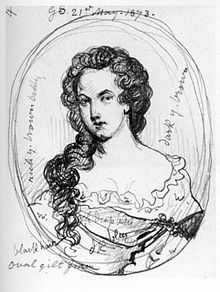When literary people talk about women poets they often mention famous figures from the past. Emily Dickinson is the American poet who almost defined poetry for generations of schoolchildren as well as adults. Her name is familiar

to most readers, and a movie about her life, A Quiet Passion, impressed critics and moviegoers as recently as last year. The pale, reclusive Emily in her white dresses, scribbling her poems on little pieces of paper in her room seems the ideal poet.
Other women poets of the past are also well known. Elizabeth Barrett Browning, confined to her sickbed for years until rescued by Robert Browning, who took her to Italy and helped her become famous. Female poets are often associated with illness, delicacy and fragility. They are viewed as weak creatures, prone to suicide and early deaths. But not all women poets fit this pattern. Today I want to look back and honor the tough woman who proved that a woman could be both a writer and an active participant in worldly life—Aphra Behn.
One of the reasons Aphra Behn is not remembered, perhaps, is that we know little about her life. She was born, probably in 1640, almost two hundred years before Emily Dickinson in England. Her parents might have been a barber and a wet nurse, or perhaps not. One indisputable fact is that she learned to read and write, a rare privilege among working class women of her time. The gift of literacy made it possible for her to meet and mingle with people of all classes. Her introduction to aristocrats may have come through one of the families her mother met while acting as a wet nurse.
Coming of age during the restoration, when Charles II returned to the throne, gave Aphra an opportunity to become active in the world of theater and publishing. As Oliver

Cromwell’s puritan restrictions were removed, there was an outpouring of publishing and theater. Starting out as a poet, Aphra turned to writing fiction and produced the story Oroonoko, set in Surinam, which became a long-lasting best seller. Later she turned to writing plays. She also, apparently, served as a spy for Charles II. Because she seldom discussed her background, very few facts are well established. One thing that we know for sure is that she was finally buried in Westminster Abbey—although not in the poets corner where many of her male friends and colleagues lie.
For those who would like more information about her life, I recommend a biography by Janet Todd, Aphra Behn: A Secret Life. It is long, but gives a continuously fascinating picture of a life shaped by history and secrets.
Perhaps the most important statement about Aphra Behn was made by Virginia Woolf in her essay “A Room of Her Own”. All women together, ought to let flowers fall upon the grave of Aphra Behn… for it was she who earned them the right to speak their minds… Behn proved that money could be made by writing at the sacrifice, perhaps, of certain agreeable qualities; and so by degrees writing became not merely a sign of folly and a distracted mind but was of practical importance.
So as we read the poetry of the delicate women poets of the 19th century during this Poetry Month, we also ought to pay tribute to a woman who came before them. She struggled with poverty and class prejudices to make her way in a man’s world and in doing so she ensured that women’s voices would eventually be heard.
 backwards and in high heels.” That about sums up the extra requirements put on women as they move ahead in a professional world dominated by men. Often this includes the expectation that women in any field will look like models and stay as fit as athletes whether this has anything to do with their work or not. Men are usually permitted to put on a little weight (as long as they wear a well-tailored jacket to disguise it) or to let their biceps sag a bit.
backwards and in high heels.” That about sums up the extra requirements put on women as they move ahead in a professional world dominated by men. Often this includes the expectation that women in any field will look like models and stay as fit as athletes whether this has anything to do with their work or not. Men are usually permitted to put on a little weight (as long as they wear a well-tailored jacket to disguise it) or to let their biceps sag a bit.